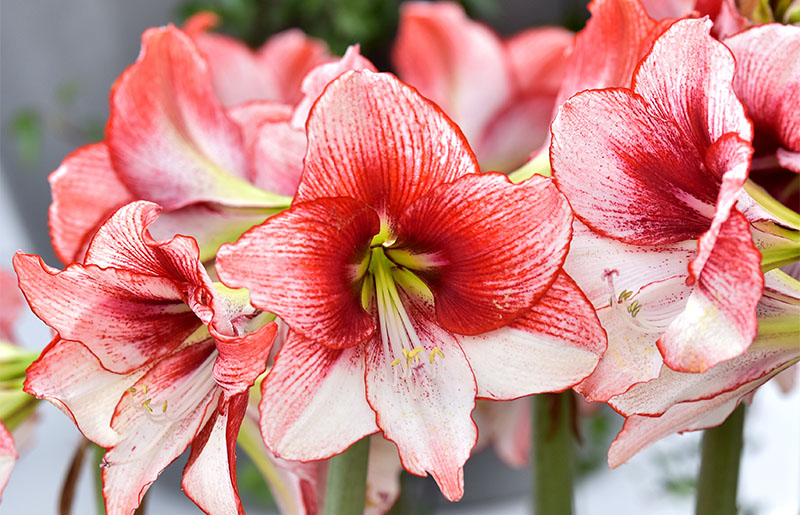
February Gardening Tasks for Harris County Residents: Expert Tips from the Harris County Master Gardeners
As February arrives in Harris County, gardeners are gearing up for a busy month of cleanup, planning, and planting, especially in the wake of Winter Storm Enzo, which brought several inches of snow across the Greater Houston Area in January. The storm’s chilly conditions have left some lingering concerns for garden care, but as temperatures rise and the weather begins to warm, it's time for residents to jump into essential gardening tasks.
With guidance from the Harris County Master Gardeners, a volunteer organization trained through the Texas A&M AgriLife Extension Service, residents can prepare their gardens for a healthy, vibrant season ahead.
Prepare for Cold Weather Protection
Though the warmer mid-60s temperatures of February may feel like spring, residents are reminded that the last frost date for Zone 9, which includes Harris County, is typically February 26. Given the unpredictable weather and the chilling memory of the 2021 freeze, it's essential to have cold protection materials on hand, including frost cloths, mulch, and other coverings to protect vulnerable plants from unexpected cold snaps.
Manage Winter Damage
After the winter storm, gardeners should assess any freeze damage to their plants. For perennials and ornamental grasses that show signs of frost damage, it's time to trim back their foliage to just a few inches above the soil line. This helps promote healthy new growth as the weather warms up.
Mobile Sidebar Ad
Plant and Fertilize Perennials
February is a great time to plant spring and summer-blooming perennials, giving them plenty of time to establish their roots before the growing season begins. For gardeners with fall and summer-blooming perennials, as well as ornamental grasses, now is also an excellent time to divide them, ensuring healthy growth and blooms throughout the year. Additionally, active perennials can benefit from a light dose of fertilizer to support their growth.
Annuals and Seeds
Cool-season annuals like alyssum, pansies, and coneflowers can be planted as transplants, bringing vibrant color to the garden in early spring. It's also a good time to start seeds for warm-season annuals indoors, giving them a head start before planting outdoors in the coming months.
Bulb Care and Planting
Gardens will begin to come alive as spring-blooming bulbs like daffodils, tulips, and hyacinths start to show signs of life. For gardeners who love the colorful burst of summer flowers, February is the perfect month to plant gladiolus bulbs. For continuous summer blooms, plant gladiolus every two weeks from January through May. Additionally, give spring-blooming bulbs a light application of fertilizer to encourage strong growth.
Rose Care
February marks the end of the ideal window for planting and transplanting roses, making this a crucial time to get roses into the ground. Gardeners should also finish pruning their roses in early February to prepare them for healthy growth. It's a good rule of thumb to finish pruning by Valentine’s Day, though some gardeners prefer to complete it by the end of January. For climbing roses, wait until after blooming to prune.
Mobile Sidebar Ad
Shrub Care
Now is the time to finish planting shrubs, including transplanting azaleas if needed. Prune shrubs while they are still dormant to maintain their shape and encourage new growth. Avoid over-pruning, which can weaken the plant.
Native Plants and Fertilization
For those with native plants, fertilize them when new growth begins to emerge. Native plants are particularly well-suited to Harris County’s climate and can provide a reliable source of color and structure in the landscape.
Lawn Care and Maintenance
Lawns need attention in February to stay healthy through the spring. Gardeners should rake the lawn to ensure that grass gets ample sunlight. Leaves can be reused as compost or mulch, adding valuable nutrients to the soil. Additionally, applying pre-emergent herbicides will help control spring weeds before they have a chance to take root.
Ground Cover and Vines
For areas of the garden that are difficult to mow or where grass has struggled, consider planting ground cover. Remove existing vegetation, till the soil, and add organic matter to prepare the soil for new plants. As the weather warms, shear back any ground cover to a height of 6 to 10 inches before new growth begins.
Most woody vines, including popular varieties like wisteria, should not be pruned until after they have bloomed, which is usually in the spring. This helps preserve their beauty and encourages healthy flowering.
Mobile Sidebar Ad
Edibles: Vegetables, Herbs, and Fruits
Edible gardens can flourish in February, as it's the ideal time to plant cool-season vegetables such as broccoli, cauliflower, and cabbage. Root crops like carrots, radishes, beets, and turnips can also be seeded directly into the ground. Strawberries and potatoes are another great addition to the garden this month. These crops thrive in the cooler early months of the year, making February an important time to plant them for a productive harvest later on.
Tree Care
Late February is the final opportunity to fertilize most trees before the growing season begins in earnest. For fruit trees, pruning should be done according to the specific needs of the tree species. Gardeners can consult the County Extension Office for detailed pruning guides. Additionally, February is the right time to prune summer-blooming trees like crape myrtles and chaste trees to ensure strong growth and vibrant blooms in the months ahead.
Wrapping It Up
With the right preparations, February can be a productive month for gardeners in Harris County. The Harris County Master Gardeners offer invaluable resources to help residents, with year-round education and resources to help the community grow successfully. To learn more, visit their website at hcmga.tamu.edu.
 Tiffany Krenek has been on the My Neighborhood News team since August 2021. She is passionate about curating and sharing content that enriches the lives of our readers in a personal, meaningful way. A loving mother and wife, Tiffany and her family live in the West Houston/Cypress region.
Tiffany Krenek has been on the My Neighborhood News team since August 2021. She is passionate about curating and sharing content that enriches the lives of our readers in a personal, meaningful way. A loving mother and wife, Tiffany and her family live in the West Houston/Cypress region.







